by Sean Flynn
“You are embarking on a documentary game in which everything is real: the places, the events, the characters. Your mission? To visit Fort McMurray, measure what’s at stake, vote on referendums and debate with other players. Fort McMoney’s fate is in your hands.”
David Dufresne sat down with OpenDocLab’s Sean Flynn to reflect on the making of his critically-acclaimed documentary game Fort McMoney, set in a real oil boomtown in northern Alberta where the players can explore the city, debate the issues and vote on referendums that decide its virtual fate.
1 – CONCEPT
Documentary + Game
In David’s previous interactive documentary, Prison Valley, he had used some game mechanics – like first person navigation and an inventory of items that users can carry – but he doesn’t consider the project a real game. With Fort McMoney, he set out to make a “real game documentary” to see how these genres could be more deeply integrated.
“The main influence was the game SimCity,” says David. “Because Fort McMurray is really like a SimCity city. It’s growing really fast and there are a lot of buildings. But you have to balance economic growth with things like pollution and social issues, just like in the game.”
A New Form of Journalism
Another primary goal from the outset of the project was innovation. David spent 15 years working as an investigative journalist, reporting on everything from punk rock to policing for the French newspaper Liberation, but he believes the time has come to find new way to tell stories. “One of the main reasons is nobody cares – about social issues, environmental issues, political issues.” When he first approached NFB Interactive Studio about the project, producer Hugues Sweeney told David about the phenomenon of “green fatigue,” which is basically when people start to tune out books, movies or articles about environmental issues.
David thought a game could be a better way to get people interested and involved in stories like the Canadian oil boom. But he acknowledges there are some big differences between the world of traditional journalism and interactive documentary. One is that interactive documentary makes it possible to both tell a story and give people space to think, debate and share their experiences within the world of the story. “You’re sharing the story with the user and sharing control with the user. But that space for dialogue gives both creators and users more responsibility. You have to accept losing some control of the story.”
Interactive documentaries also need to be immersive, which means creators have to think about interactivity. “Unlike journalism, it’s not just fact-checking and style. Now you have to think about interface, user experience, design.”
David believes this mode of storytelling, in which the storyteller and audience share the story and share control, is critical for keeping journalism relevant. Can games provide an answer? He points to the game Spent, which simulates the financial distress experienced by a low-wage worker. For some people, this game might be much more efficient that a bunch of New York Times articles about poverty. “Articles are not enough,” he says. “That’s the problem that journalism is facing. Journalism is not enough now. It’s not just ‘green fatigue’ – it’s information fatigue. Media are losing credibility and I think interactive could regain some of that credibility.”
2 – DESIGN & DEVELOPMENT
The Team
These days, there is increasing pressure on journalists to do everything, from writing the article and taking photographs to promoting via social media and managing online discussion. David’s process is more deeply collaborative, in the tradition of documentary filmmaking and game development. His team on Fort McMoney included the usual documentary filmmaking roles – such as cinematographer, editor, and composer – but he also worked closely with designers and software developers. “The designer is like a co-director in interactive production,” he explains. David also stresses the importance of the producers he worked with at the National Film Board and Upian. Their role is not only to help raise money, as they would on a film, but to oversee all aspects of interactive design and development.
SimCity for Real
Fort McMoney started with a simple idea: “Let’s make SimCity for real.” The first step was assembling a team of three game designers – Olivier Mauco and Florent Maurin in Paris and Guillaume Perreault in Montreal – to help David imagine what this would mean. “I knew what I wanted to do, and why, but I had no idea how.”
The team began to map out the environmental, social and economic dimensions of Fort McMurray and the oil boom. Working with an economist, they created an Excel spreadsheet to begin modeling how these dimensions were interrelated. For instance, how would a policy change like nationalizing the oil industry change the environmental impact on Fort McMurray and the surrounding area?
This model formed the foundation of Fort McMoney’s game mechanic. In the game, players have control over a virtual city that starts off identical to the real-life Fort McMurray in terms of population, economic productivity and other variables. However, over the course of four episodes, players are able to debate and vote on a series of referendums that affect the balance between the social, economic and environmental health of the virtual city.
David also traveled to Fort McMurray on a 3-day research trip to photograph life on the ground. They brought footage and photographs back to Montreal and worked with a Flash and HTML developer, Dominic Mercier, to develop a prototype that integrated the SimCity game mechanic with real footage and stories from Fort McMurray. (For those interested in the technical development of Fort McMoney, see Dominic Mercier’s excellent series of articles.
Other core members of the Fort McMoney development process included Maude Thibodeau (a graphic designer responsible for both branding and user interface design), a user experience designer (who helped map out the pathways that users could follow through the game), a backend developer and an executive producer. They also collaborated with a project manager who worked on both the technical and user experience sides of the project. David points out that this person left the project midway through production and the team made the mistake of not replacing him, which saved money in the short term but cost more down the line: “It’s so important to have a technical project manager that has a complete picture of the project’s development.”
Like many design-based projects the process was highly iterative. David and crew returned to Fort McMurray seven times to gather new material. Each time the script for the project changed, but the basic game mechanic stayed the same. Design and shooting processes were deeply interconnected rather than following a linear path. “I don’t like the term ‘architect’ to describe my role, ” David says. “Because an architect draws up plans, then the carpenter and plumber and others come along and implement them. In Fort McMoney, we’re all designing and building the house together at the same time so I’m more like a ‘foreman’ or ‘construction manager.’”
David talks about how user interaction can be influenced by the topic of the story. For instance, Prison Valley was modeled after the Colorado town in which it was shot: there’s a “main street” everyone travels down with small perpendicular side streets that provide detours for those interested. In Fort McMoney, he wanted to create a “no limit” city – a completely nonlinear experience that allows players to freely explore.
This kind of integration between shooting and design requires that collaborators develop a common language to describe key features of the user experience and modes of user navigation through the project. This shared vocabulary allowed designers to influence how certain elements of the project were filmed by requesting images that matched the types of user interaction that would be embedded within them. For instance, if a player will be standing in one place and needs to swivel their perspective from one side to another, this requires shooting a seamless photographic panorama. Each time David and his crew returned to the city, they’d bring a new “shopping list” of shots needed to build these types of interfaces and create visual continuity as the user travels from one location to another.
Establishing a shared language and vision for the project was one of David’s primary challenges on the project, particularly given the cultural differences between filmmakers, designers, developers and journalists.
Point of View
Another design challenge with Fort McMoney was striking a balance between journalistic neutrality and more documentary-style point of view. It was important for David that the project reflect both left-wing and right-wing political perspectives on the issues. To that end the game gives players free reign to explore the city and even to conduct interviews with locals. During any given break in the “conversation,” a player can choose from up to three questions to ask or exit the interview and move on to another subject. In total, the project contains 550 interview questions. “We conducted these interviews in the most objective way I’ve ever done, asking questions from left to right” says David. “So you can choose the question that’s important to you, whether you’re an environmental activist or have a more capitalist perspective.”
“My point of view is there, but it’s not in the editing, it’s in the structure of the database.”
While the game mechanics might be considered “neutral” from a journalistic standpoint, David insists that the project still has a distinct point of view. One way that this comes across is in the sequencing of episodes. Fort McMoney is broken up into four episodes that were released in four-week intervals. The first deals with social issues, the second with the economics of Fort McMurray, the third with environmental issues and the final is an epilogue that looks ahead to the post-oil era. Focusing first on social issues, rather than the economic benefits of oil production, is a subtle way that David can reveal his perspective. “Fort McMoney is not an activist piece. My point of view is there, but it’s not in the editing, it’s in the structure of the database.”
Simulation as Storytelling
Tell me and I will forget.
Show me and I will remember.
Involve me and I will understand.
Step back and I will act.
— Chinese proverb
Perhaps the most striking distinction between Fort McMoney and conventional forms of journalism or documentary is that it attempts to creation a simuluation of possible futures for the city – a future that can be directly shaped by the players themselves. David doesn’t see any contradiction between journalistic values and creating simulations that model hypothetical scenarios – in fact, he believes it’s necessary. “It seems that most journalists only want to talk about the past and the present, never the future. But this is what Wall Street, the EU, the US government do all the time. They make projections. Journalism is not only about conveying facts. It’s a tool for thinking.”
When asked about Fort McMoney in the New York Times, Will Wright, the creator of SimCity, likens this kind of simulation to being in the driver’s seat and making decisions yourself. “Games are becoming an important part of our way of seeing the world.”
Timeline
Research and Development
- Spring 2011: the idea is born
- June 2011: first proposal
- December 2011: development funding from CMF
- February 2012: first video shoot
- April 2012: first prototype
Production
- June 2012: production funding from CMF
- Summer 2012: production agreement with ONF / ARTE
- Summer – Fall 2012: first script
- Fall 2012: visual research
- December 2012: 2nd shoot
- January 2013: beginning of Flash development
- February 2013: 3rd shoot
- March 2013: 4th shoot
- March – November 2013: editing + further development
- July – October 2013: coloring, sound mix, scoring
- August 2013: fine-tuning game features
- September 2013: alpha version finished
- September – November 2013: beta version
- October 2013: finalized script, decision not to develop mobile version
Launch and Distribution
- November 2013: project launches at IDFA
- January 24, 2014: beginning of Episode 2
- April – June 2014: editing TV film
Budget
3 – LAUNCH & DISTRIBUTION
Partnerships
One of the biggest challenges for web-based documentaries, particularly boundary-pushing works like Fort McMoney, is finding an audience. “In interactive doc, there’s no audience. You have to build a community with each new project.” This becomes even more challenging for a project that needs players or users to function. “If nobody came to play, Fort McMoney would be a beautiful but empty cathedral.”
For this reason, one of the first priorities for the producing team – which included Hugues Sweeney and Jenny Thibault (NFB), Philippe Lamarre (Toxa) and Alexander Kneting (Arte) – was to get partners involved that could help drive audiences to the game. One approach to this kind of partnership between interactive documentaries and newspapers has been a kind of direct exchange – creators provide innovative content and newspapers drive audiences to the project. Although this was how David approached distribution partnerships for Prison Valley, he felt this model was lazy and wanted to do more with Fort McMoney.
The main idea was involve newspapers in the experience of the game itself and generate discussion around it. Journalists from Sue Deutsche in Germany and the Globe and Mail in Canada agreed to become players in the game and write about it for their readers. They also published interviews and articles reporting on the referendums in the game, speculating about how the results would impact the real-world Fort McMurray. This strategy allowed the game to create a debate that moved across platforms, from the game to newspapers and back. The Fort McMoney team worked closely with newspapers to plan out this strategy, sharing the agenda of the game in advance, so partners could tailor coverage to the themes and issues in each episode.
The Gamemaster
Another critical aspect of the strategy for engaging audiences around Fort McMoney was establishing a “gamemaster” to guide players after the game was launched. David learned from Prison Valley that this was a real job that neeed to be budgeted for, so he wrote up a 5-page document for his producers explaining the gamemaster’s role and responsibilities. He volunteered for the job and saw it as an extension of his role as a director.
Similar to a community manager on a discussion-based website, the gamemaster monitors discussions, publishes news and administers social media accounts. But David also played a more active role in debates, helping summarize points from both sides and playing devil’s advocate when necessary to push the debate further. “If too many people were presenting left-wing arguments, we’d jump in and provide arguments for the right-wing side.”
David believes that the presence of the gamemaster also helps the game feel more like a real community and gives players a more human connection to the project.
User Testing
Many interactive projects involve some kind of user testing before launch. The Fort McMoney team originally planned to beta test the project one month before launch, but due to a compressed production schedule that wasn’t possible. “Besides not hiring a new project manager, this was our other big mistake,” says David. “We pushed to the launch the project at IDFA DocLab in November 2013, but we ended up launching the project with a lot of bugs. It would have been better to wait 2 weeks or a month to do some beta testing and fix the bugs.”
David also points out that interactive creators have to be careful with user testing. “In Hollywood, they have focus groups and sometimes even change the end based on feedback. I don’t want to do that. For me, user testing is asking not only ‘do you understand the story,’ but also ‘do you understand the experience?’” David admits that audiences are not always ready for unfamiliar content like Fort McMoney. Surprise can be a good thing, but it can also lead to confusion. “You’re saying to the audience: you’re going to be part of the story, you’re going to be inside the story. But not everybody wants to be part of the story.”
Measuring Audiences
At the end of the day, did Fort McMoney successfully engage audiences in the oil issue? The project attracted approximately 412,000 players and 21,000 “hard core” players. Around 2,000 of these players left 6,477 comments and the project was mentioned 7,300 times on Twitter. Other key digital metrics that the team looked at were the time players spent on the site and the number of return visitors.
David stresses that numbers alone are not enough to gauge the success of an interactive project. “That’s the TV industry way of seeing if something is successful,” he says. Other sources of audience feedback came in the form of a Facebook page players set up independently to exchange advice about the game, a user-drawn map of the Fort McMoney storyworld (which closely resembled David’s own drawings from two years prior), and fan-produced images remixed from the game. David also conducted a survey with 30 players to determine the difficulty of the game and gave 60 live presentations of the game, allowing him to receive more direct feedback from audiences.
New Modes of Engagement
The word “engagement” is used frequently in the interactive documentary field, but its meaning varies from project to project and from creator to creator. When asked about how he thought about engagement while making Fort McMoney, David reflects on the tradition of political filmmaking that arose out of the 1970s, what the French called “cinéma engagé” or engaged cinema. In that context, directors “engaged” themselves directly in the film or in a political issue. With interactive documentary, David believes, “we’re now transferring that expectation of engagement to the audience.”
Contrasting interactive projects with examples of more didactic approaches to documentary, such as the films of Michael Moore, he says “I want to share my doubt with the audience. I want to create a debate and think together with the audience.” For David, engagement can’t simply be asking audiences to post on Facebook or Twitter. It’s still a political act, and it’s a process that takes time and can’t be easily measured by analytics.
As audiences become more familiar with experimental forms like documentary games, he believes they will have greater social impact. “We used to say that interactive documentaries were like the R&D wing of the documentary and journalism field. We’ve done almost 10 years of R&D and I think we’re getting to the next level. But it’s an innovative sector so we always have to keep our imagination open.”
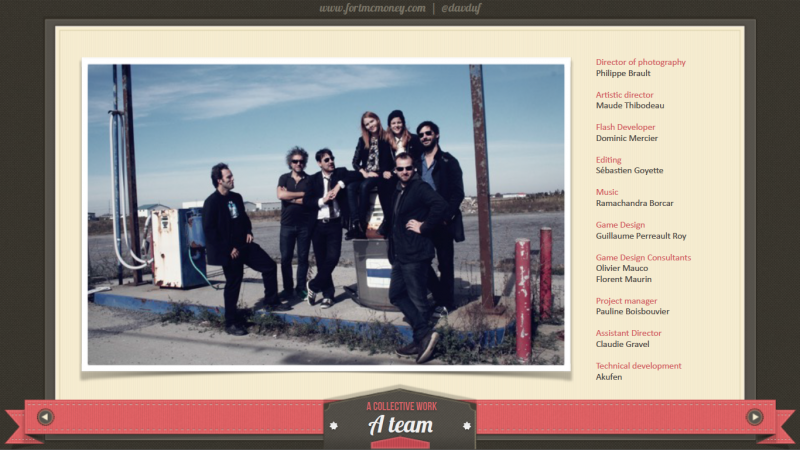



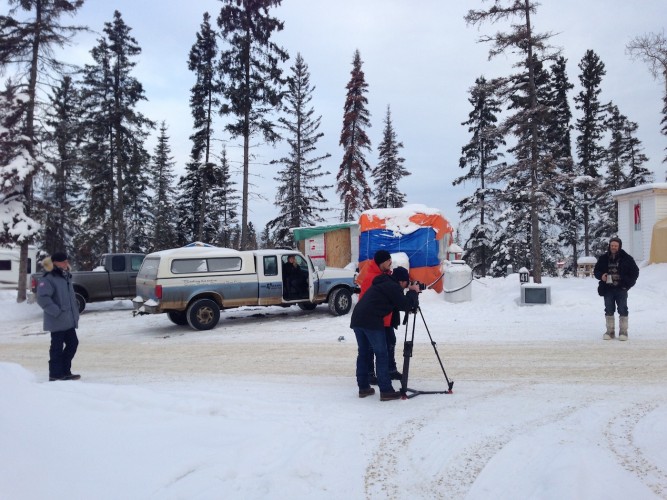
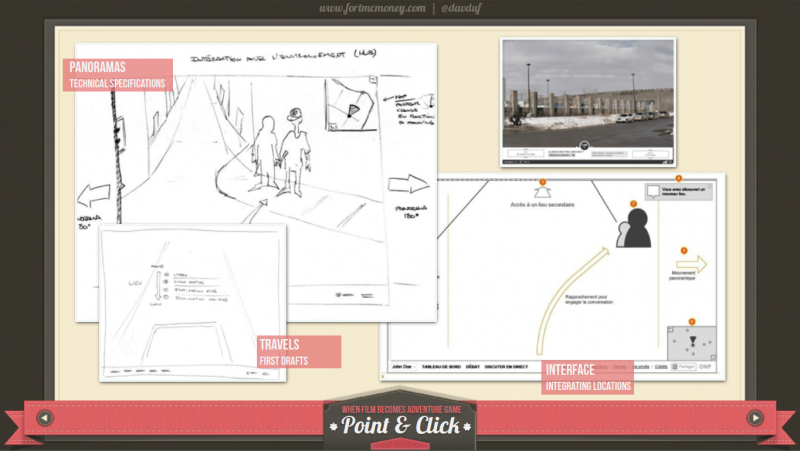


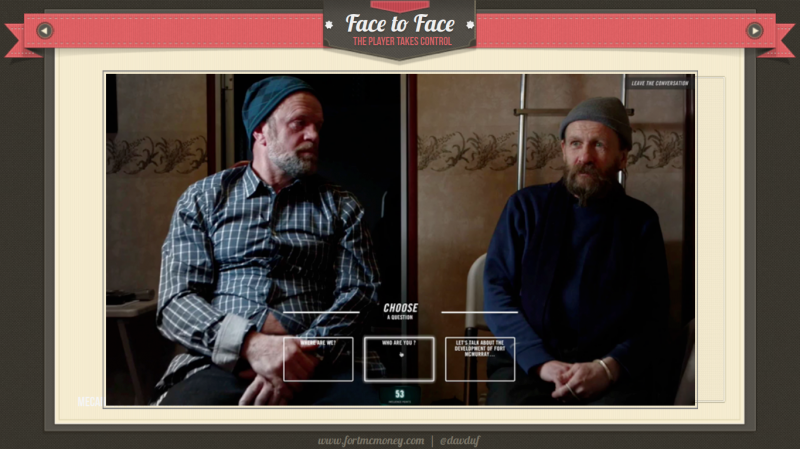



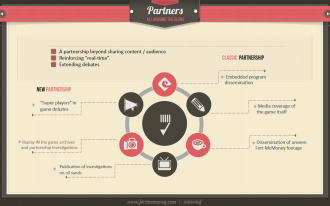
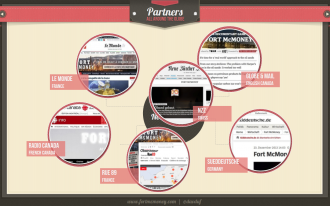
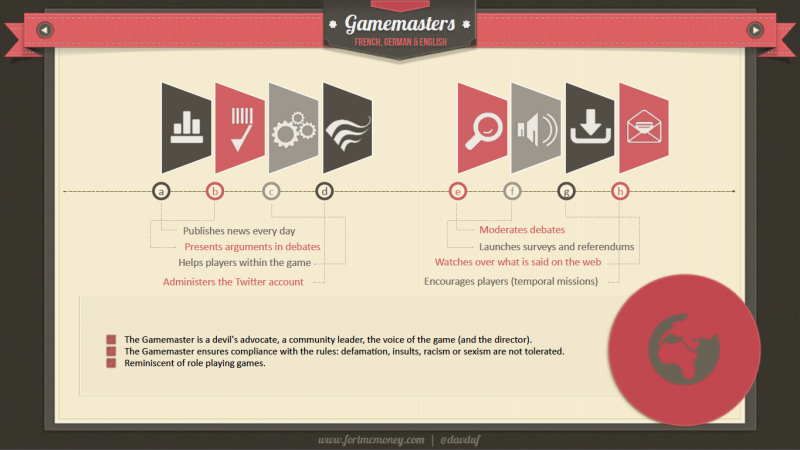
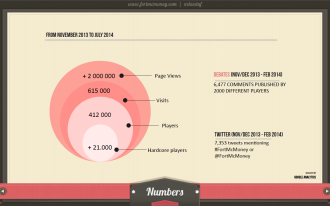
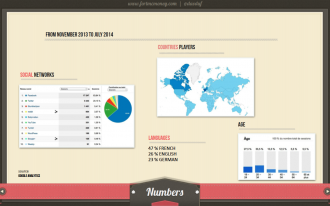
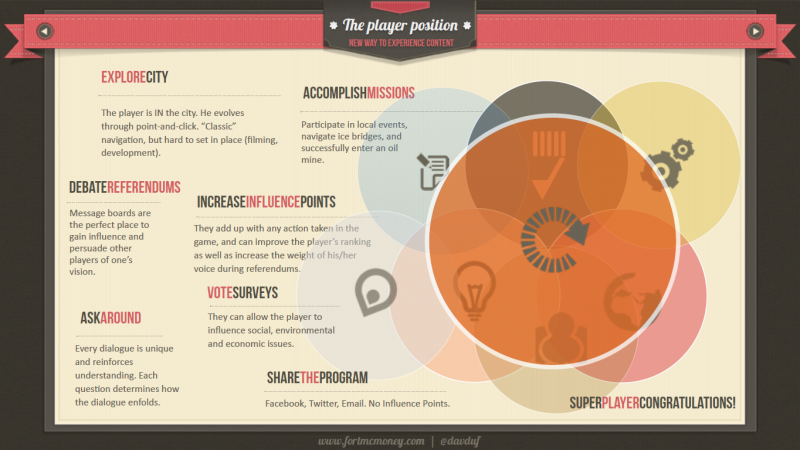
0 comments